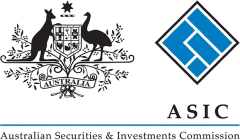Currency in Australia
A Travel Money Guide to Australia
When visiting Australia, most tourists use a mixture of cash and cards. Although the use of cash is on the decline in Australia, the vast majority of shops and tourist attractions will accept hard currency as payment.
This guide is a quick look at the currency used in Australia.
What Currency is Used in Australia?
The only currency used in Australia is the Australian dollar, which has been the official currency since 1966. Before 1966, Australians used British notes and coins.
Outside of 'mainland' Australia, the Australian dollar or 'Aussie Dollar' is used in Tasmania, the Australian Antarctic Territory, Christmas Island, Cocos (Keeling) Islands, Heard Island and McDonald Islands, and Norfolk Island.
Can you use US dollars or New Zealand dollars in Australia?
No, almost every Australian business only accepts Australian dollars. The only exception might be duty free shops in the Airport.
If you arrive into Australia with foreign currency, you will need to find a currency exchange to convert your money into Australian dollars.
Please note that most money changers only accept newer, clean, unaltered banknotes. They don't accept foreign currency coins.
Australian Money
Australian currency is made up of 5 banknote denominations and five coin denominations. The banknotes come in a range of colourful designs while the coins are either gold or silver in colour.
Banknote Denominations
Australian currency banknotes are available in
- 100 dollars, which is green, 158 mm wide, and 65mm high
- 50 dollars, which is yellow, 151 mm wide and 65mm high
- 20 dollars which is orange, 144 mm wide and 65mm high
- 10 dollars which is blue, 137 mm wide and 65mm high
- 5 dollars which is purple, 130 mm wide and 65mm high
The denominations are the same height but their width is ordered in terms of size. So the 100 dollar note is the largest and the 5 dollar is the smallest.
The polymer notes have a number of security features, including holograms, patterns, shadow images, and serial numbers.

Coin Denominations
Coins are available in
- 2 dollars which is a gold colour
- 1 dollar which is also gold in colour
- 50 cent which is the largest, silver in colour and only coin that isn't circular
- 20 cent which is the second largest and also silver
- 10 cent which is silver in colour
- 4 cent which is the smallest and silver in colour

Other useful information that might help you understand the Australian money include:
- Most places in Australia will accept 100 notes but most people use 50's instead.
- The 50 dollar banknote is also know locally as a "pineapple" due to it's vibrant yellow colour.
- The first 2 numerals on the banknotes signify the year it was printed. That way you can tell how old the bank note is.
- Most Australian coins have an image of Queen Elizabeth II. New coins will feature King Charles III.
Money Exchange in Australia

Changing your money in Australia is relatively easy but can be expensive, depending on how you do it.
The most common places to exchange currency
In most major cities, you will find a place to exchange currency like S Money. Each has its own exchange rates and set of fees to be aware of.
The key is to compare a few options online or in person. Make sure you compare the Australian dollar amount you will receive from them for your exact foreign currency after fees.
If you are exchanging more than $1000 Australian dollars worth of currency, you must provide identification, such as a driver's license or passport.
For more information about currency exchange in Australia, click here.

